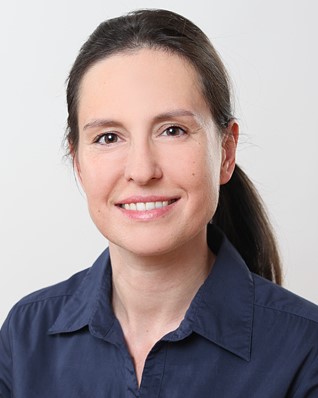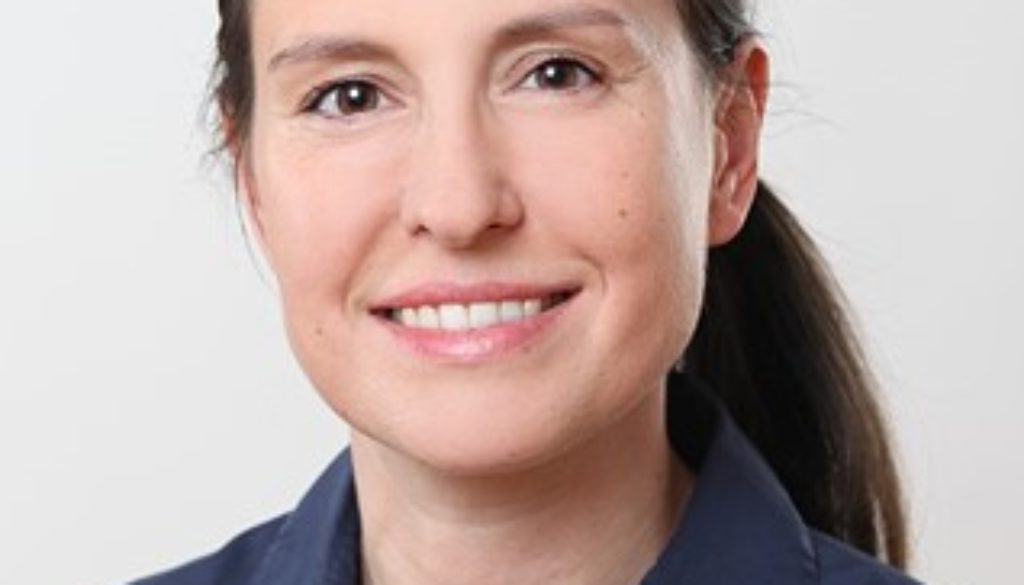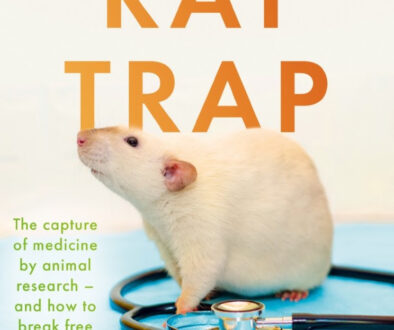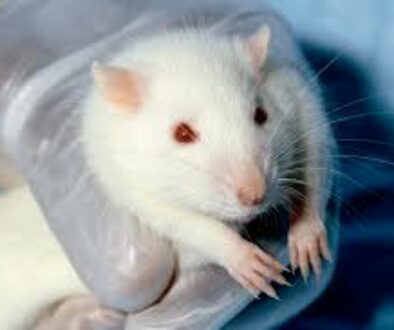Interview with Dr Tamara Zietek
“The mouse intestine is different to the human one. If you want to study absorption of nutrients or drugs, then a mouse system is not appropriate”
 Dr. Tamara Zietek works as Scientific Officer for the German NGO Doctors Against Animal Experiments (Ärzte gegen Tierversuche e.V.) and lives near Cologne, Germany. She is an expert for human-based, animal-free in vitro technologies in the field of biomedical research and has been invited as a speaker to a number of international scientific conferences. In the past years, she published numerous articles in international scientific journals, scientific book chapters as well as articles for the broad public. Dr. Zietek holds a PhD in biochemistry and worked as a research group leader at the Technical University of Munich for 8 years. During her time as a researcher, she established the intestinal organoid model (mini intestines grown in the lab from human tissue biopsies) for studies on nutrient and drug absorption as well as for research on metabolic disorders such as diabetes and obesity. At the beginning of her career at the Technical University of Munich, Dr. Zietek observed mouse experiments. Based on her personal observations, she realised that these animal experiments were a failure and that human-based models are the answer to human-relevant questions.
Dr. Tamara Zietek works as Scientific Officer for the German NGO Doctors Against Animal Experiments (Ärzte gegen Tierversuche e.V.) and lives near Cologne, Germany. She is an expert for human-based, animal-free in vitro technologies in the field of biomedical research and has been invited as a speaker to a number of international scientific conferences. In the past years, she published numerous articles in international scientific journals, scientific book chapters as well as articles for the broad public. Dr. Zietek holds a PhD in biochemistry and worked as a research group leader at the Technical University of Munich for 8 years. During her time as a researcher, she established the intestinal organoid model (mini intestines grown in the lab from human tissue biopsies) for studies on nutrient and drug absorption as well as for research on metabolic disorders such as diabetes and obesity. At the beginning of her career at the Technical University of Munich, Dr. Zietek observed mouse experiments. Based on her personal observations, she realised that these animal experiments were a failure and that human-based models are the answer to human-relevant questions.
Antidote Europe (AE) : For the past two years, you have been studying human intestine derived from surgical waste. Could you share your experience with our readers regarding the logistical obstacles you needed to overcome in order to obtain these human tissues (ethical committees, paperwork, finding surgeons willing to collaborate) ?
Tamara Zietek (TZ) : The formal hurdles are really high if you want to grow human organoids – no matter which tissue they are derived from. It took us more than one year of administrative work until we finally had the tissue in our lab and could start growing intestinal organoids. First of all, you need to find a surgeon who is willing to collaborate. These doctors are rare as a lot of them perceive it as a nuisance to care about special tissue handling etc. during surgery. Luckily, the Technical University of Munich has a University hospital so it was a question of networking with some professors to finally get in touch with our collaborating surgeon. Subsequently, there were a number of formal steps including contracts with the hospital, with the pathology department and with the ethics committee – a lot of paper work indeed. After final approval by the ethics committee, we needed to organize the logistics. It is essential that the collaborating hospital is situated near your lab because the isolated tissue is sensitive and needs to be delivered to the lab within a few hours. In our case, the hospital was approximately 30 km away from our lab, so we organized a taxi transfer. Another issue is that the tissue is not delivered at regular intervals, sometimes we got biopsies twice a week and sometimes every 2 weeks. In addition, you are informed by the hospital at very short notice that a biopsy will be delivered. Finally, you must ensure that there is always someone in the lab to accept the delivered material.
AE : The use of animals is unfortunately still widely considered to be the current paradigm in biomedical research. Would you say that it is much easier for researchers to obtain authorisation to experiment on 100 mice than to obtain authorisation to obtain human surgical waste ? If yes, what needs to change in the system to make it simpler for researchers to access human tissues ?
TZ : I think, if a researcher wants to start working with mice beginning from zero, it is also complicated and associated with a lot of formal obstacles. But this is very rarely the case, because usually, most universities and scientific institutes have an in house animal facility which can be used by all departments. In this case, it is definitely easier to start running an animal study compared to a project involving human subjects.
It would be helpful to have a biobanking system for human tissue. Unfortunately, tissue for growing organoids cannot be stored for a long time. It would therefore be helpful to have a centralized approach at universities and research institutions – similar to an in house facility. This would be a great advantage for researchers because they would only need to make a agreement with this core facility. whereas collaborating surgeons for different tissue types, contracts with hospitals and the ethics committee for different scientific purposes as well as logistics would be organized by the core facility. It should be noted that such an approach would only make sense if many research teams at the institution worked with human tissue.
AE : You decided to leave your previous job because you did not want to perform animal experiments. Is your objection to the use of animals based on ethical or scientific grounds, or both ? Do you remember a specific time in your career when the use of animals started to ring alarm bells ?
TZ : It was both, ethical and scientific reasons for which I finally stopped working on projects involving animal studies. I never wanted to conduct animal experiments – for ethical reasons. Therefore, in my diploma thesis, I worked with microorganisms (bacteria and yeast) and in my PhD thesis with microorganisms and plants. When I started working at the Technical University of Munich, I was asked to supervise some PhD students who worked with mice. Although I did not perform animal experiments myself – that was the job of my technicians and PhD students – I supervised the projects and did never feel well with that. But the more data I saw from the mouse experiments, the less confidence I had that this is a good « model system ». I was astonished about the high inter-individual variability of the data. And also about the missing robustness of this model. I often wondered why we were not able to reproduce the data from mouse experiments published by others, although we did everything exactly as described in the paper. After speaking to other researchers who were working with animals, I learned that this is a very common problem. There are scientific publications showing that mouse experiments deliver totally different outcomes depending on the lab room where the animals are housed beforehand. I also learned that inter-species differences are a big problem. In many publications you find the argument that certain experimental findings differ from another paper because the study was conducted in another species – e.g. rats instead of mice. Divergent experimental results are also explained by different genders. So I had a really hard time believing that data from mice can be easily tranferred to humans.
AE : Could you describe the advantages of using human intestine organoids over the use of living animals or animal tissues ? What interest is being shown by the pharmaceutical industry to the application of human organoids in drug development and research ?
TZ : The mouse intestine is different to the human one. If you want to study absorption of nutrients or drugs, then a mouse system is not appropriate. It hence makes sense to use a human in vitro system for studying such mechanisms. Furthermore, data obtained from human intestinal organoids show better reproducibility over animal experiments. Organoids can be generated from individual patients with gastrointestinal diseases and this allows therapeutic approaches in the form of personalized medicine. Scientific questions related to inflammatory diseases or malabsorption syndromes and also to diabetes or cancer can be targeted. The so-called micro-tumor-technology is already applied for clinical purposes and cancer therapy. Tumor spheroids are grown from patient biopsies and used either in drug development for the screening of novel agents or for the identification of the most effective drug against a patient-specific tumor type.
Pharmaceutical companies are very interested in human organoid models or other human based 3D cell culture models. In contrast to animal experiments, theses models provide human-relevant data, they show better reproducibility, are suitable for high-throughput screenings, cheaper and less time-consuming. The pharmaceutical industry supports the development and validation of organ-on-a-chip systems, where human-derived cell culture models of different tissues are combined on a biochip platform and connected via a microperfusion system simulating the blood circuit and the urinary circuit. Recently, a 10-organ-chip was developed with brain, liver, kidney, intestine etc.
Such approaches are highly innovative and have huge future-potential for human medicine.
AE : Thank you so much for this very interesting interview.




